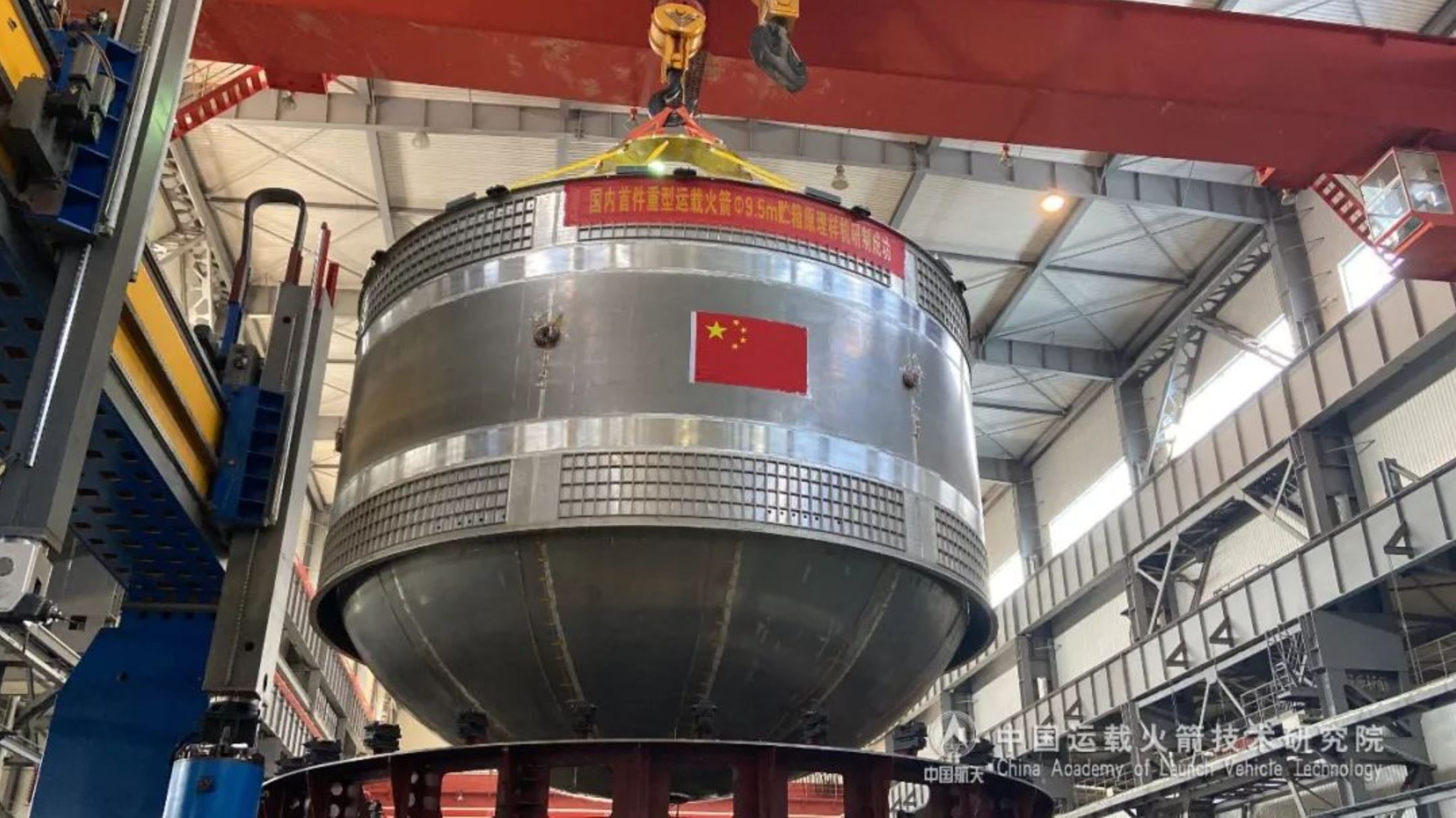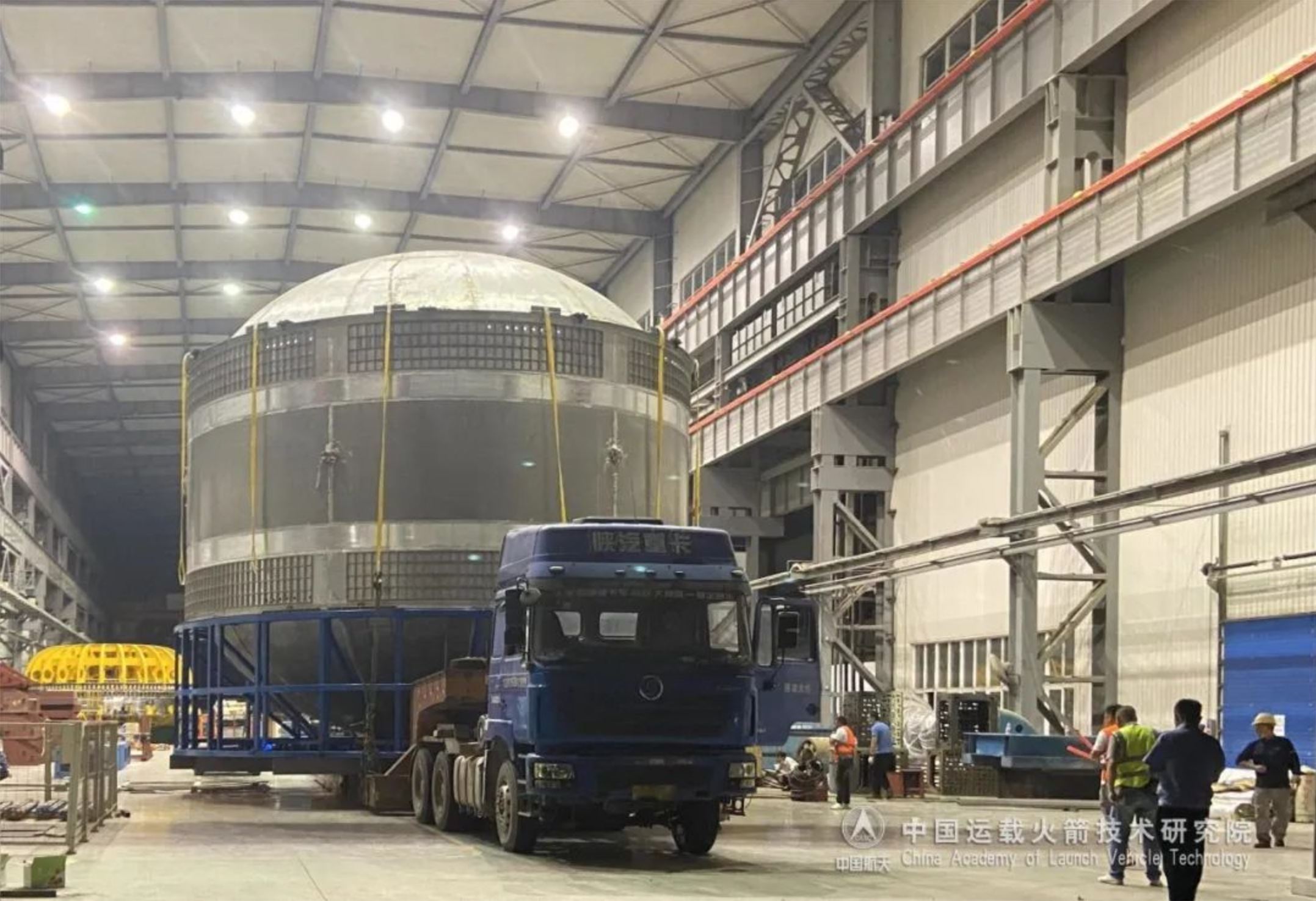China builds huge propellant tank for massive future rocket (photos)
The development marks a breakthrough for building the Long March 9 rocket.

China has produced a 33-foot-wide (10 meters) class propellant tank as it works toward building a super heavy-lift launch vehicle.
The China Academy of Launch Vehicle Technology (CALT) announced on March 2 that it had manufactured the huge tank, demonstrating that it had made breakthroughs required to produce a propellant storage tank strong yet also thin and light enough for use in rocket launches.
The 31.1-foot-diameter (9.5 m) tank was built to specifications for an old design for an expendable version of China's planned Long March 9 rocket. China has since stated it is switching to a new, reusable design with a diameter of 34.7 feet (10.6 m), but the demonstration of techniques such as stir friction welding and materials will be applicable to the new plan.
Related: China's Long March rocket family: History and photos

China's current widest and most powerful rocket is the 16.4-foot-diameter (5 m) Long March 5 family, which can launch roughly 48,500 pounds (22,000 kilograms) to low Earth orbit (LEO). When it flies for the first time around 2030, the Long March 9 will have a payload capacity to LEO of around 308,000 to 330,000 pounds (140,000 to 150,000 kg).
The rocket will be used to build China's planned International Lunar Research Station (ILRS), which is the country's answer to NASA's Artemis project. It could also be used for launching space-based solar power infrastructure and deep space missions.
CALT is a subsidiary of CASC, which is China's state-owned main space contractor. Other CASC entities are specialized in areas including rocket making, developing and building spacecraft, designing new engines and more.
Get the Space.com Newsletter
Breaking space news, the latest updates on rocket launches, skywatching events and more!
CALT is also developing a new launch vehicle for launching crew to the Tiangong space station and a larger version for sending astronauts to the moon. A first launch is currently planned for 2027.
Follow us on Twitter @Spacedotcom and on Facebook.
Join our Space Forums to keep talking space on the latest missions, night sky and more! And if you have a news tip, correction or comment, let us know at: community@space.com.

Andrew is a freelance space journalist with a focus on reporting on China's rapidly growing space sector. He began writing for Space.com in 2019 and writes for SpaceNews, IEEE Spectrum, National Geographic, Sky & Telescope, New Scientist and others. Andrew first caught the space bug when, as a youngster, he saw Voyager images of other worlds in our solar system for the first time. Away from space, Andrew enjoys trail running in the forests of Finland. You can follow him on Twitter @AJ_FI.









